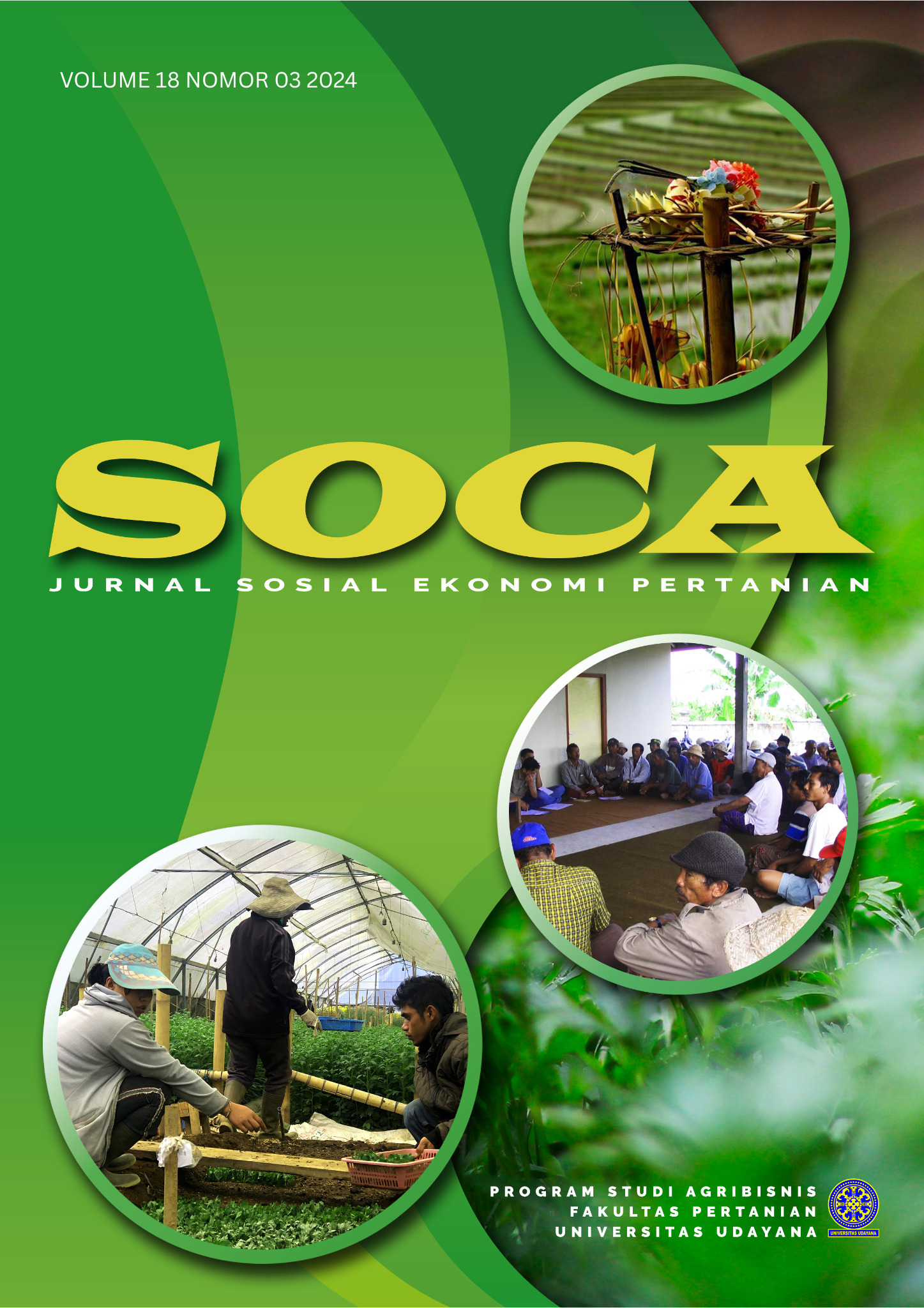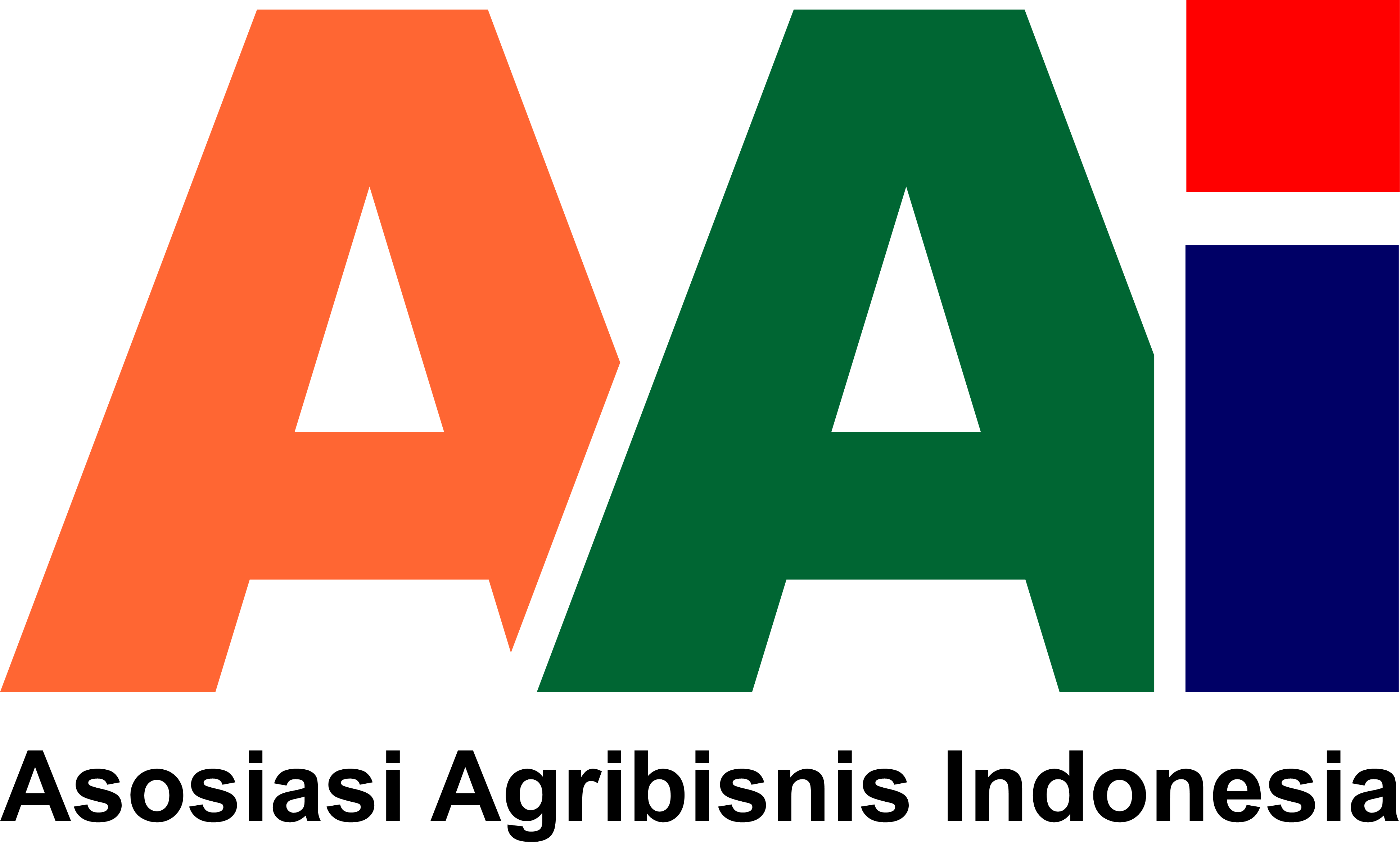Hydroganic and Mina Padi Innovation: An Economic and Land Efficiency Study
Abstract
Agricultural efficiency and sustainability are major challenges amidst limited land availability and increasing food demand. Pusat Pelatihan Pertanian dan Pedesaan Swadaya (P4S) Bengkel Mimpi in Malang Regency integrates the agriculture and fisheries sectors through two methods: hydroganic and mina padi systems. This study aims to analyze the economic feasibility and land efficiency of the two systems applied for rice and catfish cultivation at P4S Bengkel Mimpi. Using quantitative descriptive method, the analysis was conducted using cost and income approach, NPV, DPP, B/C Ratio, BEP, and IRR. The results of the analysis on 100 m2 of land show that the hydroganic system has an NPV of IDR 57,655,541.40, a DPP of 13.65 months, a B/C of 3.95, and an IRR of 20%, with an increase in land productivity of up to 580%. Meanwhile, the mina padi system has an NPV of IDR 3,706,655.25, DPP of 5.67 months, B/C of 3.05, and IRR of 58%, with a faster return on investment. These findings suggest that hydroganic system is superior in land productivity, while the mina padi offers a shorter return on investment, providing strategic recommendations for the application of agricultural and aquaculture integration technologies.
Downloads
References
Barus, H., Muhardi, Samsu, & Gasong, M. (2023). Catfish population and organic media composition affect rice growth and yield in aquaculture-hydroponic systems. IOP Conference Series: Earth and Environmental Science, 1253(1). https://doi.org/10.1088/1755-1315/1253/1/012033
Emanauli, E., Sari, F. P., & Oktaria, F. (2021). ANALISIS BREAK EVENT POINT (BEP) PADA PABRIK TEH PT. PERKEBUNAN NUSANTARA VI UNIT USAHA KAYU ARO. JAS (Jurnal Agri Sains), 5(1). https://doi.org/10.36355/jas.v5i1.516
Ghalibaf, M. B., Gholami, M., & Mohammadian, N. (2022). Stability of Food Security in Iran; Challenges and Ways Forward: A Narrative Review. In Iran J Public Health (Vol. 51, Issue 12). https://creativecommons.org/licenses/by-nc/4.0/
Goda, A., Aboseif, A. M., Mohammady, E. Y., Taha, M. K. S., Mansour, A. A., Aboushabana, N. M., Ramadan, E. A., Zaher, M. M., Otazua, N. I., & Ashour, M. (2023). Integrated Rice-Multi-Trophic-Aquaponics and Rice-Tilapia- Monoculture Systems as Environmental Techniques for Optimizing Water, Feed Conversion Ratio, Nitrogen, and Phosphorus Use Efficiency. https://doi.org/10.21203/rs.3.rs-3467355/v1
Gunawan, D., Ode Abdul Rajab Nadia, L., & Rosmawati, dan. (2020). ANALISIS KELAYAKAN INVESTASI USAHA IKAN NILA ORGANIK BERBASIS TEKNOLOGI AQUAPONIK (STUDI KASUS PADA KOLAM FAKULTAS PERIKANAN DAN ILMU KELAUTAN
UNIVERSITAS HALU OLEO). In J. Sosial Ekonomi Perikanan FPIK UHO (Issue 4). http://ojs.uho.ac.id/index.php/JSEP
Ikhwali, M. F., Nur, S., Darmansyah, D., Hamdan, A. M., Ersa, N. S., Aida, N., Yusra, A., & Satria, A. (2022). A review of climate change studies on paddy agriculture in Indonesia. IOP Conference Series: Earth and Environmental Science, 1116(1). https://doi.org/10.1088/1755-1315/1116/1/012052
Irawan, S., & Antriyandarti, E. (2021). Fertilizer application, climate change and rice production in rural Java. IOP Conference Series: Earth and Environmental Science, 755(1). https://doi.org/10.1088/1755-1315/755/1/012086
Khairullah, I., Annisa, W., Subagio, H., & Sosiawan, H. (2021). Effects of cropping system and varieties on the rice growth and yield in acid sulphate soils of tidal swampland. Ilmu Pertanian (Agricultural Science), 6(3), 163. https://doi.org/10.22146/ipas.62041
Lolaso, T., Assef, E., & Woldeamanuel, T. (2024). Status of food insecurity and its determinants by smallholder farmers in Shashogo district, Hadiya zone, Central Ethiopia. Cogent Food and Agriculture, 10(1). https://doi.org/10.1080/23311932.2024.2360765
Maharani, R., Rusdi, Z., & Yunyver, L. (2022). ANALISIS PENDAPATAN USAHATANI SAYUR HIDROPONIK PADA GREENHOUSE KENDANGSARI KOTA SURABAYA. Balance Vocation Accounting Journal, 5(2). https://doi.org/10.31000/bvaj.v5i2.5234
Pawlak, K., & Kołodziejczak, M. (2020). The role of agriculture in ensuring food security in developing countries: Considerations in the context of the problem of sustainable food production. Sustainability (Switzerland), 12(13). https://doi.org/10.3390/su12135488
Putra, B. T. W., Syahputra, W. N. H., Rusdiamin, Indarto, Anam, K., Darmawan, T., & Marhaenanto, B. (2021). Comprehensive measurement and evaluation of modern paddy cultivation with a hydroganics system under different nutrient regimes using WSN and ground-based remote sensing. Measurement: Journal of the International Measurement Confederation, 178. https://doi.org/10.1016/j.measurement.2021.109420
Ridwan, W., Supiana, S., & Zaqiah, Q. Y. (2022). Optimalisasi Pemanfaatan Lahan Berbasis Pertanian Terpadu di Pondok Pesantren Ma’ruful Hidayah. JIIP - Jurnal Ilmiah Ilmu Pendidikan, 5(10). https://doi.org/10.54371/jiip.v5i10.1046
Sauqie, M., Elfitasari, T., & Rejeki, S. (2017). ANALISAUSAHA KEGIATAN BUDIDAYA MINAPADIPADA KELOMPOK MINA MAKMUR DAN KELOMPOK MINA MURAKABIDI KABUPATEN SLEMAN. Https://Ejournal3.Undip.Ac.Id/Index.Php/Jamt/Article/View/20605, 6(1), 1–7. https://ejournal3.undip.ac.id/index.php/jamt/article/view/20605
Setiadi, E., Taufik, I., Widyastuti, Y. R., Ardi, I., & Puspaningsih, D. (2019). Improving productivity and water quality of catfish, Clarias sp. cultured in an aquaponic ebb-tide system using different filtration. IOP Conference Series: Earth and Environmental Science, 236(1). https://doi.org/10.1088/1755-1315/236/1/012026
Sharma, K. R., Palit, D., & Krithika, P. R. (2016). Economics and management of off-grid solar pv system. In Green Energy and Technology (Vol. 196, pp. 137–164). Springer Verlag. https://doi.org/10.1007/978-3-319-14663-8_6
Souza, S. V., Gimenes, R. M. T., & Binotto, E. (2019). Economic viability for deploying hydroponic system in emerging countries: A differentiated risk adjustment proposal. Land Use Policy, 83. https://doi.org/10.1016/j.landusepol.2019.02.020
Szekely, I., & Jijakli, M. H. (2022). Bioponics as a Promising Approach to Sustainable Agriculture: A Review of the Main Methods for Producing Organic Nutrient Solution for Hydroponics. In Water (Switzerland) (Vol. 14, Issue 23). MDPI. https://doi.org/10.3390/w14233975
Wicaksono, A. F., & Handayani, R. (2021). BENEFIT COST RATIO (BCR) ANALYSIS OF THE ROAD RECONSTRUCTION USING HARDENED SHOULDER PROGRAM IN EAST JAVA PROVINCE. 2(1), 126–140.
Yassi, A., Kaimuddin, & Ekawati, I. (2020). Paddy-fish cultivation within an integrated farming system. IOP Conference Series: Earth and Environmental Science, 575(1). https://doi.org/10.1088/1755-1315/575/1/012144
Zainal, A. G., Yulianto, H., Rudy, & Yanfika, H. (2021). Financial benefits of the environmentally friendly aquaponic media system. IOP Conference Series: Earth and Environmental Science, 739(1). https://doi.org/10.1088/1755-1315/739/1/012024
Zappernick, N., Nedunuri, K. V., Islam, K. R., Khanal, S., Worley, T., Laki, S. L., & Shah, A. (2022). Techno-economic analysis of a recirculating tilapia-lettuce aquaponics system. Journal of Cleaner Production, 365. https://doi.org/10.1016/j.jclepro.2022.132753
Žižlavský, O. (2014). Net Present Value Approach: Method for Economic Assessment of Innovation Projects. Procedia - Social and Behavioral Sciences, 156, 506–512. https://doi.org/10.1016/j.sbspro.2014.11.230













